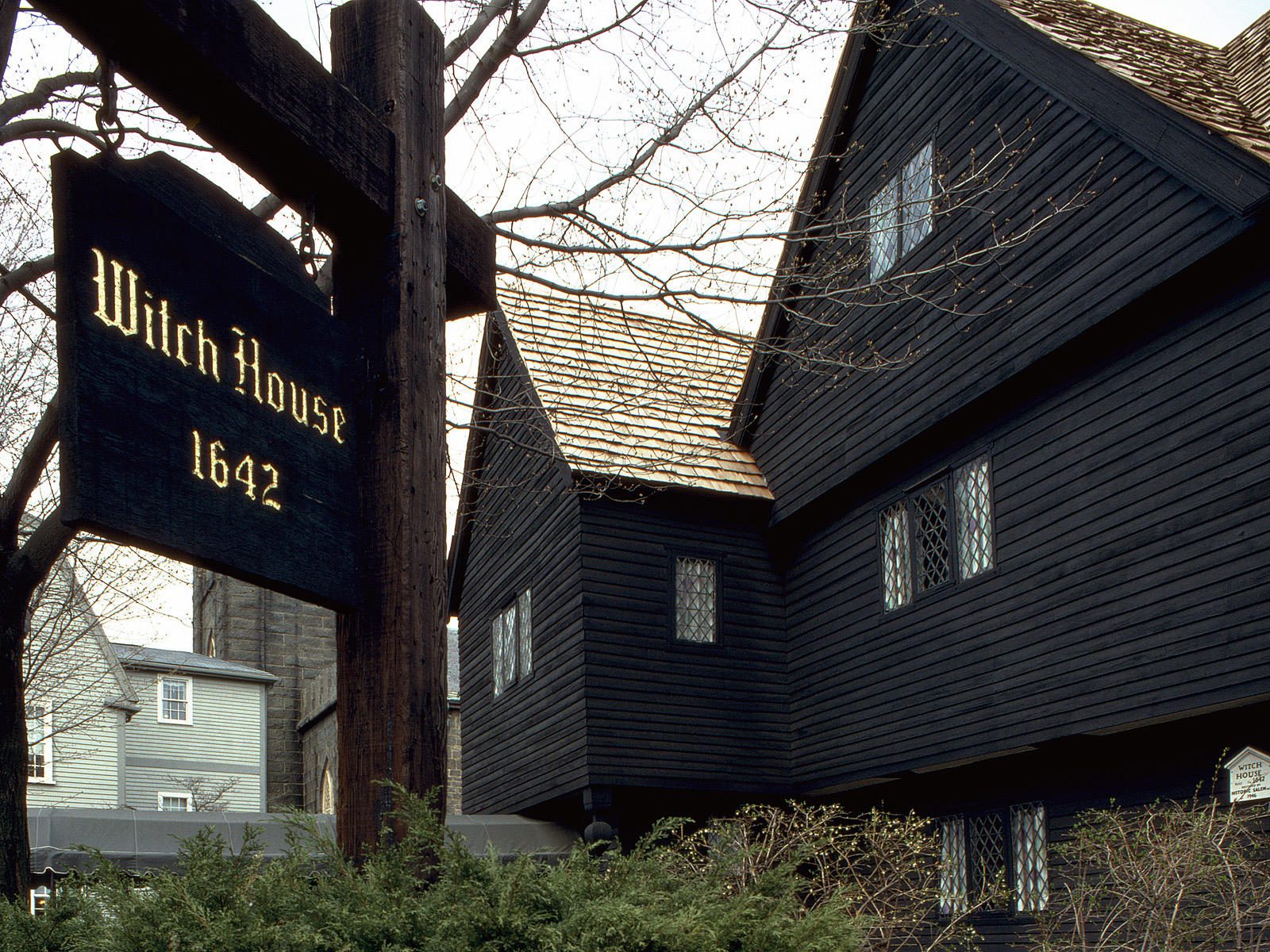

I know not everyone visits Salem for the witchy stuff…I have received plenty of messages from folks who want to see Salem from more of a historical angle. So today on the blog, I have a list of some of my favorite historic Salem spots. Keep in mind there are PLENTY more, this is by no means a complete list. The following are just a few of my favorites.
And okay, fine. There is a little bit of witchy history tied in. :p You can’t really separate the two completely.
If you’re into info like this, you might also like my witchy tour of Salem, my Salem in one day post or my favorite most Instagrammable places in Salem.
So without further delay, here we go.
The House of the Seven Gables
“The seaside mansion known as The House of the Seven Gables was built in 1668 for Captain John Turner I, the head of one of the most successful maritime families in the New England colonies. The industriousness of Turner and his descendants in the fishing, trading, and mercantile businesses came to define the economy of Puritan New England and began New England’s maritime tradition.
The original part of the home featured a two-over-two floor plan around a large, central chimney. This was typical first period dwellings. His success in business allowed him to construct two additions before his death in 1680, including the great ell that featured grand proportions, high ceilings, and enormous windows.”
Source: The House of the Seven Gables
The Witch House
“The Witch House, home of Judge Jonathan Corwin, is the only structure still standing in Salem with direct ties to the Witchcraft Trials of 1692. As a local magistrate and civic leader, Corwin was called upon to investigate the claims of diabolical activity when a surge of witchcraft accusations arose in Salem and neighboring communities. He served on the Court of Oyer and Terminer, which ultimately sent nineteen to the gallows. All nineteen refused to admit to witchcraft and maintained their innocence.
The house is an excellent example of seventeenth-century architecture. Judge Corwin, buried in the nearby Broad Street Cemetery, purchased the structure in 1675 when he was 24 years old and lived there for more than forty years. The house remained in the Corwin family until the mid-1800’s.”
Source: SalemWeb
The McIntire District
“The distinctive McIntire Historic District encompasses an area with more than 300 historic structures. This urban walking tour, which takes the visitor past several of architect Samuel McIntire’s significant houses, includes magnificent sea captains’ houses as well as humble workers’ cottages. It covers a little over a mile and takes about 45 minutes. The route is marked on posts and sidewalk plaques by a sheaf of wheat, designed by McIntire to symbolize Salem’s prosperity. The walking tour begins at the Witch House, on the corner of North and Essex Streets.”
Source: Essex Heritage
Charter Street Historic District
“It may not be as beautiful or architecturally significant as Chestnut Street or Federal Street or even Washington Square. But tiny Charter Street, all of two blocks long, has enough history associated with it to be listed on the National Register of Historic Places.
Charter Street was laid out in 1767 as a town street and ran between the town wharf on the South River at the foot of Market (now Central) Street and a cove in front of what is now Immaculate Conception Church. The portion east of Liberty Street was originally called Vine Street.
The street boasts the city’s oldest cemetery. In 1637 the town voted to set aside a point of land overlooking the South River as a burial ground. The site was probably already being used for that purpose. Historian Sidney Perley suggested that many of the settlers who succumbed in the great sicknesses of 1628 and 1629, including the wife of Gov. John Endicott, had been buried there.”
Source: SalemWeb
The Burying Point/Charter Street Cemetery
“Charter Street Cemetery is the final resting place for at least two members of the Court of Oyer and Terminer: physician Bartholomew Gedney and magistrate John Hawthorne, who was the great-great grandfather of famous American novelist, Nathaniel Hawthorne.
Located directly behind this cemetery is the Witch Trial Memorial. Open to the public from dawn till dusk, we ask that visitors treat the graves with respect and appreciation due to their age and solemnity.”
Source: Salem.org
The Custom House
“The Custom House at Salem Maritime NHS is the last of 13 Custom Houses in the city. There has been a Custom House in Salem since 1649, collecting taxes on imported cargos first for the British Government during the Colonial period, then for the American Government after the establishment of the U. S. Customs Service in 1789. This Custom House was built in 1819 and housed offices for the officers of the U.S. Customs Service, as well as an attached warehouse, the Public Stores, used for the storage of bonded and impounded cargo.
Today, the U.S. Custom House in Salem contains exhibits on the tools of the Custom Service, the work of the Customs inspectors, and the office of Nathaniel Hawthorne, the famous American author whose three-year-long stint in the Salem Custom House inspired his classic novel, The Scarlet Letter.”
Source: Salem National Park Service
The Ropes Mansion
“The Ropes Mansion (late 1720s), also called Ropes Memorial, is a Georgian Colonial mansion located at 318 Essex Street, located in the McIntire Historic District in Salem, Massachusetts. It is now operated by the Peabody Essex Museum and open to the public.
The house was built for Samuel Barnard, a merchant. In 1768, Judge Nathaniel Ropes, Jr., purchased the house from Barnard’s nephew. The Ropes family then inhabited the house until 1907, when the house was given to the Trustees of the Ropes Memorial for public benefit.
Although altered through the years and then restored, the house looks much like its original form, with a symmetrical facade of two stories, three small pedimented gables through the roof, roof balustrade, and modillioned cornice. (Compare it to the Crowninshield-Bentley House and the Peirce-Nichols House, also in Salem.) In 1807, however, its interior was extensively renovated. In the mid-1830s five rooms and the central hall were remodelled, and today’s doorway installed (with details inspired by Asher Benjamin’s pattern book. In 1894 the house was moved away from the street and further modified internally. A large, fine garden was added behind the house in 1912.”
Source: Wikipedia
West India Goods Store
“The term “West India Goods Store” was used in Salem as a generic term for a retail shop selling items from all over the world, not just the Caribbean. This building was constructed by Captain Henry Prince about 1804 and was probably first used as a warehouse. Prince may have kept goods like pepper, coffee, water buffalo hides, and tortoise shells here that he imported from the East Indies. The first documented use of this building as a West India Goods Store was in 1836. The structure underwent numerous changes throughout its history, including two moves, before it was rehabilitated in 1928 by the Society for the Preservation of New England Antiquities (now Historic New England). The National Park Service acquired the property in 1937.”
Source: Salem National Park Service
What are some of your favorites? Feel free to comment below. <3
